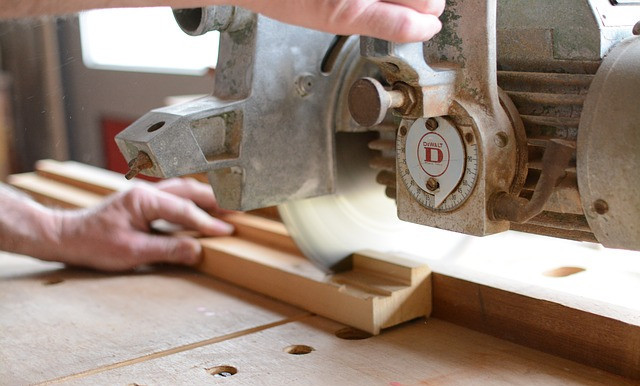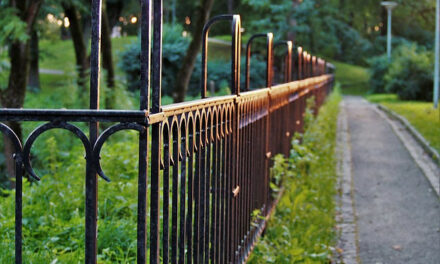Every carpenter cannot always provide you with all the necessary requirements when you are building a house or even during maintenance work. There are over 125,000 carpenters in Australia as of 2020, but not all of them were fully equipped with building a complete house. This is why the procedure of first fix carpentry and second fix carpentry came into being. But, what is the 1st Fix carpentry? What is the 2nd Fix carpentry? 1st Fix vs 2nd Fix Carpentry – what are the differences?
We’ll find out all about that from the perspective of real estate developers and investors in this article…
The first fix carpentry and second fix carpentry are open to interpretation as to what people consider it to be. You will never be able to finish all the procedures of making any infrastructure all in one single go. You need to break this down into parts.
The first fix carpentry is thus focused more upon the structure of any building. In contrast, the second fix carpentry is the final completion and touchers. This is used for both commercial buildings and residential buildings.
However, the differences between first Fix and second fix carpentry is not that simple.
Let’s dive in…
What is First Fix Carpentry?
When we talk about first fix carpentry, it is the first phase of construction. Not everyone is skilled in the various skills you need to fulfill the construction of a house or commercial building. Hence, First, fix carpentry is basically when the carpenter, tradesmen or contractors focus on the structural work in making a well-developed and strong building that can withstand all weathers and calamities.
During the first fix carpentry phase, you set a foundation for your building, and this phase continues till the plastering of the entire building. It includes a basic structure set up and comprises all the key structural woodwork related to making the walls, fixing the water pipes, adding the cables, etc.
What is Second Fix Carpentry?
The second fix carpentry phase is the finishing and decorating phase of the construction for any house or commercial building of sorts.
This is when you finalize all the (wood) work and put up the finishing touches. From the completion of the woodwork to the fitting of floorboards as well as the doors and windows.
The second fix carpentry, all in all, is the final completion of the entire property being worked upon.
During the second fix carpentry phase, you need to hire a range of professionals and depend not solely on one tradesman. You will need the essential electricians, plumbers, and more to install the needed equipment and necessities for any household.
Keeping this in mind, if you hire a contractor instead of a tradesman, you can avoid the risk of getting a fraudulent plumber or electrician as the contractors are well aware of who they are hiring and often have worked with those individuals beforehand.
Similarities Between First Fix and Second Fix Carpentry
Although first fix carpentry and second fix carpentry are two completely different phases in terms of construction of any house or building, both have several similarities.
They both require heavy work, such as constructing the entirety of a building followed by fixing and assembling huge parts of furniture and more throughout. It is not easy to perform all the tasks that are essential in the first fix carpentry and the second fix carpentry.
Along with this, for both these times, you will need to hire professionals in that particular field to ensure long-term benefit. Hiring a professional who knows what they need to work upon and exactly how something needs to be done makes you less prone to risk and danger in the future.
Getting professionals on board to complete your work also guarantees that you are provided with the best quality.
Moreover, there are also certain skills and expertise you will need to look at when you hire tradesmen or individuals for both first fix carpentry and second fix carpentry. Both these types of carpentry require a certain level of expertise and experience so that what you need is efficiently delivered while prioritizing the quality provided.
All in all, first fix carpentry and second fix carpentry work hand in hand to make the overall creation of a building hassle-free and a quick and timely procedure. Hence, they need to be followed to get the top-level of construction.
Now, let’s turn on to the differences between the two…
Differences Between 1st Fix vs 2nd Fix Carpentry
Although both first fix carpentry and second fix carpentry have their set of similarities, these phases also vary in many obvious ways.
After the first fix carpentry is completed, the building made is only a structure. It is inhabitable, and no one can live or work there as yet. This is one of the key differences.
Along with this, when we look closely, the first fix carpentry phase only requires carpenters and tradesmen (e.g. concrete workers) to work throughout. This lack of expertise and skills required made it far easier to find the necessary workers as well.
On the other hand, looking at the second fix carpentry phase, this makes a house ready to live in and any commercial or office building ready to be used. Understanding that second fix carpentry includes the finishing touches such as wall painting and décor, makes your house and building more attractive to look at and much more accessible as well without any danger since everything is unofficially finalized.
In addition, for the second fix carpentry phase, one needs to hire multitudes of different types of workers who are skilled in different niches. This includes a plumber, electricians, and an interior designer at times, along with other tradesmen and carpenters and more. Thus, it is a much more carefully looked at phase.
First-fix carpentry progresses in stages.
The Stages of First Fix Carpentry
- Making the structure
This is the core point of action for first fix carpentry. Designing and making a stable structure is necessary to set a strong foundation for the building in terms of future use. It is also illegal to not ensure that the building under construction is sturdy and resistant to any disasters.
- Studwork
This is the strengthening of the building and the works by using studs. It is also called the supportive framework of the building. This holds together the several different parts together like plaster and makes the building stronger to undergo difficulties in the future.
- Cladding
This is the process of adding another additional layer on top of an existing wall. It may be after insulation or without to guarantee that the house or building does not warm up too quickly.
Not only this, but it also adds to strengthening and stabilizing the building, making it less likely to get damage.
- Flooring
This is when you install a floor cover for the entire building. After having built a basic structure for the floor, you add the final layer to make the base structure permanent and fixed as per the requirement and need.
- Building door frames and stairs
This is the last and final step for first fix carpentry and is essential towards moving to second fix carpentry. Building door frames, stairs, and window frames make it accessible to connect the doors and windows to the walls. Whereas, building the stairs finishes the look and accessibility of the building.
Similarly, the second fix carpentry progresses in stages and involve some specific tasks. Let’s turn on to them now…
Key Activities Involved in Second Fix Carpentry
- Connecting water pipelines and electricity cables
This is one of the most important elements of any house and the key most activity to ensure smooth functioning in terms of making the house or building habitable.
Water and electricity have become essential, and so we need the necessary pipelines and cables installed, by this stage.
- Internal hardwood set up
This includes the basic process of setting up and installing doors and windows made out of wood along with optional wood flooring if one wants that installed as well. This is one of the features of finalizing the décor of the building.
- Skirting and molding
This is an additional added part of the hardwood set-up, which helps prevent damages to the wood.
Skirting is a protective layer around the wood or any surface. This is usually installed to cover the joint between any floor and wall or any improper edges.
Molding, on the other hand, is a sort of contour or transitional element that protects the edges of any wall or door to avoid future damage if things hit it directly.
- Fixing staircase components
This is the last step in finalizing the stairs. It is when you look upon any uneven joint or loose floorboard that can cause harm to someone using the staircase. It can also include installing side rails to avoid any unwanted outcome if children are using these staircases.
- Fitting floorboards and architraves
Fitting floorboards is putting the finishing touches on the floor, such as having them harden and deciding whether they should be tiled, concrete or wooden.
Architraves too are installed on doorways to cover and hide any unsightly joint. Both of these activities are done as a means of beautifying the house or building.
Tip: building a pergola may involve both the first Fix and the second Fix.
Advantages of Getting First Fix and Second Fix Carpentry
Utilizing the breakdown of first fix carpentry and second fix carpentry has its set of benefits. When you break down a process, you avoid rushing into things and getting them done.
- It will guide you through the construction process
Rushing into things is never a good option since you often mess them up when you hurry things. Getting everything done all at once can prove to be hazardous for the future as the building may end up not becoming as stable as it is supposed to be. Hence, these phases should be adopted to divide the work accordingly.
- Save you money
Other than this, when you use first fix carpentry and second fix carpentry, you make sure that for each specific phase the necessary experts are hired for that allotted time. This way, you do not hire these experts for a longer period of time and pay more. Instead, you can simply get in touch with them when their required work is supposed to be done as per the stage your building is at the current moment.
- Easy for decision-making
Furthermore, when you employ several different people and see the ongoing work, you know what is going on and stay updated on it. You can make urgent decisions for different things on the spot and change things as per the need without having to go the extra mile to do so. Thus following first fix carpentry and second fix carpentry also promises far greater involvement.
- Easy for finding skilled tradesmen, including carpenters
Nonetheless, this breaking down of things and employing highly skilled experts in the field ensures that you are provided with the best quality work in terms of getting your house or commercial property built.
- Best outcomes for your building
You cannot afford a risk of danger for any property since they are supposed to undergo several years of bad weather and unexpected things. As someone who is getting their house built, you will always want the best for your building, and so this is ensured through first fix carpentry followed by second fix carpentry as per the need.
Drawbacks of First Fix and Second Fix Carpentry
Like all things, first, fix carpentry and second fix carpentry have their disadvantages as well.
- It can be more time-consuming
One of the key drawbacks of employing first fix carpentry and second fix carpentry is that it is much more time-consuming than simply getting a house or building made directly without focusing on certain aspects over time. Getting all of the needed things done continuously saves a lot of time without monitoring and contacting different people over time.
In this case, however, you will need to contact different experts at different times when they are needed and will also need to supervise all that is going on so that the tradesmen do not further delay your work. Not only does this take time, but it will also increase the workload on yourself.
- Too many tradespeople (e.g. carpenters) to deal with
Another thing to keep in mind which is a negative for first fix carpentry and second fix carpentry, is that not every contractor provides both these services. If you plan to adopt this method, you might have to look for two separate contractors who offer services in all aspects, or you may have to resort to looking for other skilled people as per your requirement yourself.
Finding the experts is also time-consuming and will add to delaying the whole procedure for building your house or commercial building.
Here are some useful tips for real estate developers and investors…
Tips For Real Estate Developers
Being a real estate developer, there are several things you need to consider in order to satisfy your customers to the fullest.
- Focus on tradesperson with broader skill-set
One of the key things to keep in mind is that in order to get more customers you need to get a team experienced in all aspects. This includes not only highly skilled carpenters and tradesmen, but also plumbers and electricians to manage the entire process of building any property.
When one provides more services, you can choose them to save the hassle.
- Focus on a reliable and experienced tradesperson
Another thing that real estate developers need to do is make sure that they only hire professionals and experts in their specific field. For example, they should get someone who has years of experience and is trained enough to install the electrical wiring to guarantee no short circuit in the future.
- Make sure to assess reviews from previous clients and always check references
This risk will lead to negative reviews and losing customers. One should understand the needs of the clients they are serving and thus work upon providing them what they need instead of passing their own opinions and ideas and enforcing them upon the client. This only leaves a negative impression, and thus the client may not recommend them further in their social circle.
Keeping these basic tips in mind will ensure maximum customer turnover towards the positive side.
Summary
In conclusion, there are various phases of carpentry, while mainly there are 2. These are namely called the first fix carpentry and the second fix carpentry. They involve the basic construction followed by the finishing of any building to make it habitable.
All in all, the knowledge and know-how to use first fix carpentry and then second fix carpentry is essential for real estate developers and real estate investors in order to ensure better quality and much more stable, long-lasting buildings.
Let me know if you have any questions…





